Ultimate Chain Link Fence Wire FAQs for 2022
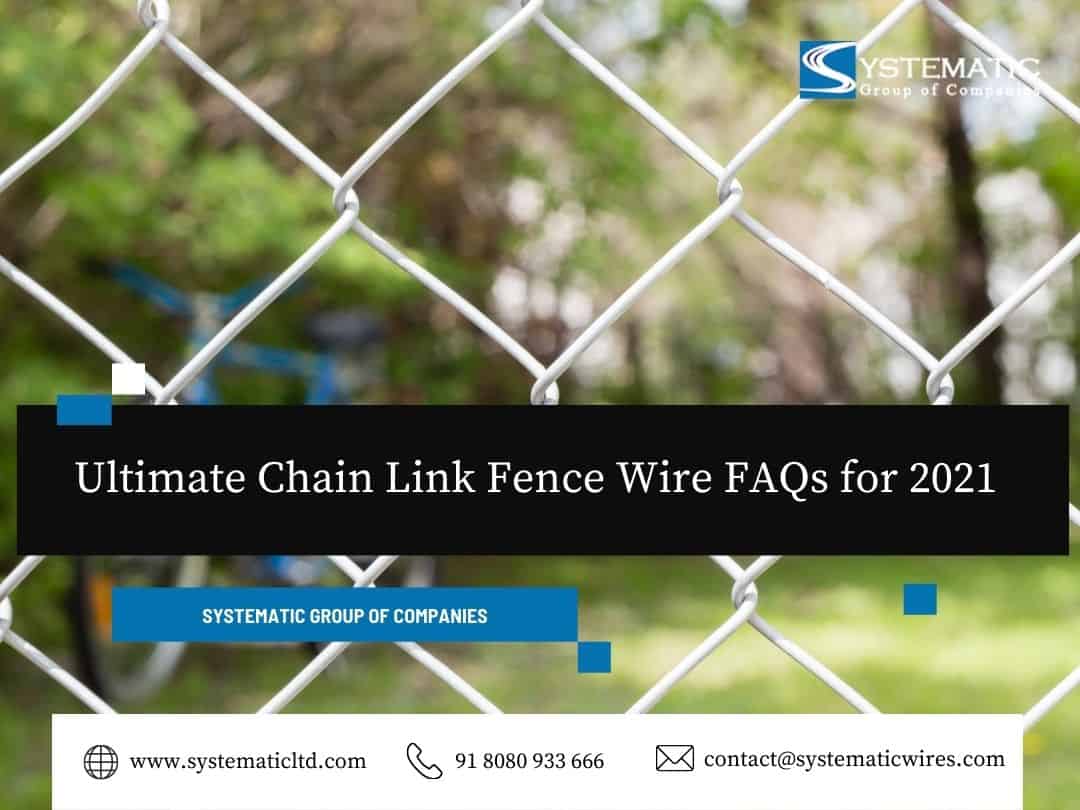
Ultimate Chain Link Fence Wire FAQs for 2022
Posted on September 09, 2021Chain link fence wire is a popular choice for fences, but it can be confusing to decide which type of chain link fence you should use. This guide will answer the most common questions about chain link fencing and chainlink fence wire so that you can make an informed decision. Find out what size chain link fence wire to buy and how much chain link fencing costs by reading this article!
What is chain link fence wire, and why is it good for you?
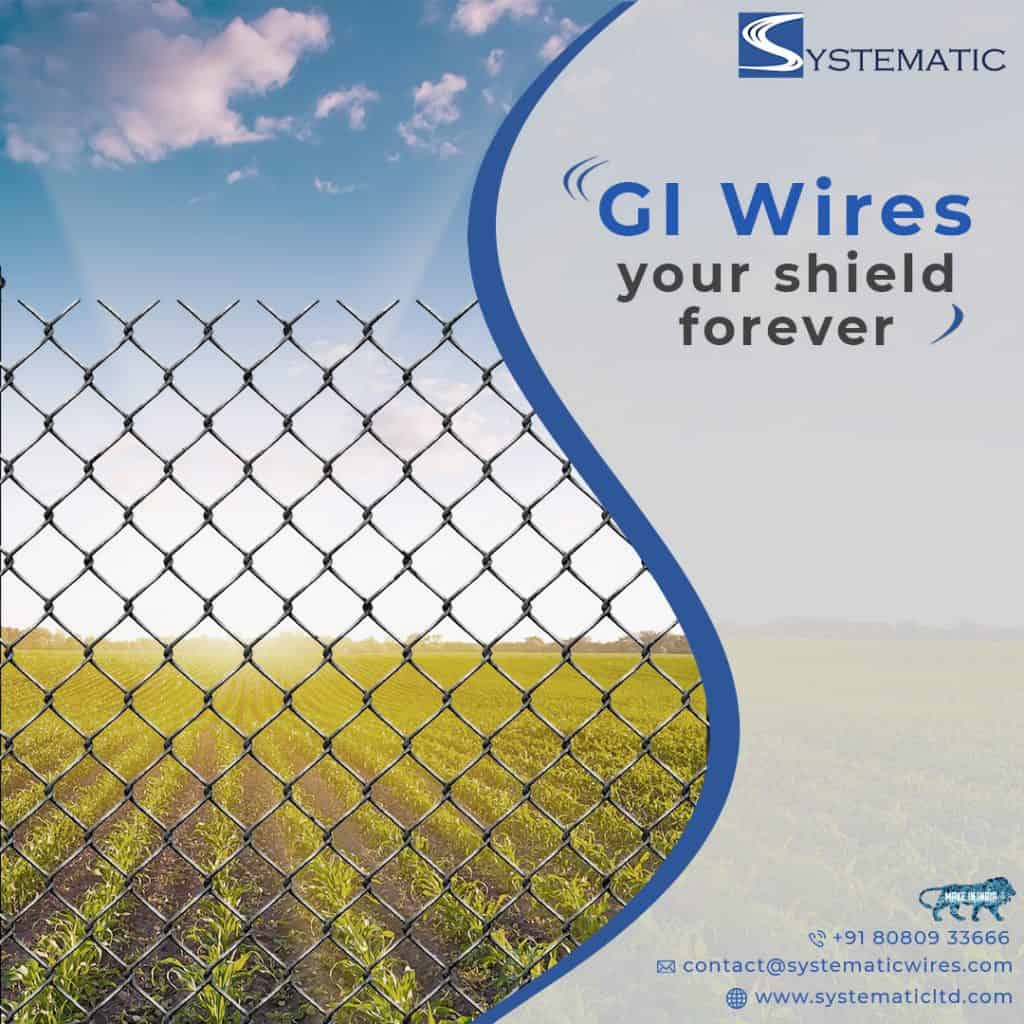
Chain link fence is made of metal, usually galvanized steel wire welded at the seams to form a mesh. It is durable, strong and has good elasticity to help it withstand wind, ice, snow or other elements. Chain wire mesh makes it perfect for outdoor applications. The wire mesh provides great visibility so you can see through the fencing at any time.
The chain links come in square shapes, measuring two-and-one-eighth inches for 14 ga., one and nine-sixteenths inch for 12 ga., or one and three-quarter inches for ten ga. The heavier gauges are used for commercial fences, while the 14-gauge wire is ideal for household use
What is a chain-link fence made of?
A chain-link fence is made with a metal wire mesh attached to steel or aluminum posts using clips, staples, or bolts. The wire mesh can come in several different styles, including diamond-shaped openings for maximum visibility, square openings for security purposes, and diamond-shaped butted style, the most common type of product available.
It’s important to note that chain link fencing isn’t a complete system without other components such as clips, staples, and bolts. For example, suppose you have standing water where you live, or your fence is frequently under high winds from hurricanes, tornadoes, or blizzards. In that case, you may need to use additional materials to keep the structure intact.
How much does a roll cost, and what does it include?

The price of the roll of fence wire varies from one supplier to another. Therefore, it depends on the brand you choose, the type of material you select etc.
Two types of materials are available for purchase:
- Welded mesh
- Non-welded wire mesh.
Welded wire is treated to be more durable than regular steel wire so that it doesn’t fray or separate. This type of fence wire is a great choice for commercial fencing needs but could be expensive for homeowner use.
Non-welded wire mesh is the most common option and includes one piece of wire that’s bent to form a hexagon shape with an attached ring at each corner. Unfortunately, this type of wire mesh isn’t treated, so it may need additional support to keep it from sagging over time.
Is there a difference between the regular and welded types?
The main difference between these two types of fencing materials is that you can’t cut or damage the welded fences as you can do to the standard ones. It makes them great for any security-conscious property owner who wants protection against intruders, vandalism, or other types of damage.
In most cases, woven wire fencing can be cut with a pair of household scissors. This makes it less expensive to transport and install and allows property owners to save money. They can purchase as much as they need instead of having to buy an entire roll whether they want it or not. These fencing materials are also more durable than the knitted versions, so it is better to use them in overgrown areas or places with obstructions.
What is a “scrape test,” and how do I know if my fencing
When choosing safe and secure fencing material, you can’t go wrong with chain links. However, like anything else on the market, some low-quality suppliers offer poor craftsmanship or material that will break down after only a few months. If you’re having trouble choosing the right supplier, you should ask about a “scrape test.”
A scrape test is a quick way to determine if your chain link fence wire has been galvanized. All you’ll need is a pair of pliers.
Start by removing a wire section from the roll with your pliers, then bend it into an “S” shape after being straightened out.
Next, scrape the section’s cut end against the ground or another hard surface. If your material passes this test, you’ll see a silver coating on the wire where it scraped the ground. A scrape test is a good indicator that your fencing materials have been galvanized.
A high-quality product will have a powdery residue with no sharp edge. In contrast, lower-quality products will have a rougher, sharper edge.
Does chain link fence wire work?

Yes! Chain link fencing material is one of the most commonly used materials for home and business fencing globally. It’s easy to install, affordable and tough enough to keep anyone out (or in, if you choose).
This common wire mesh has stood the test of time and is here to stay.
How are chain-link fences made?
Interlocking metal wire strands make chain link fencing of high tensile steel to form a mesh. This process requires the use of welding, galvanizing, and coating materials. The number of wires that are attached determines the level of security that it provides.
There are two types of chain link fences. One is knitted mesh, which is made from a single piece of wire bent into a diamond pattern. The other type is woven, and it’s the most common option because it is more affordable. Woven mesh is made up of wires that have been interwoven together to form a cloth-like screening material.
What are the top chain link fence suppliers?
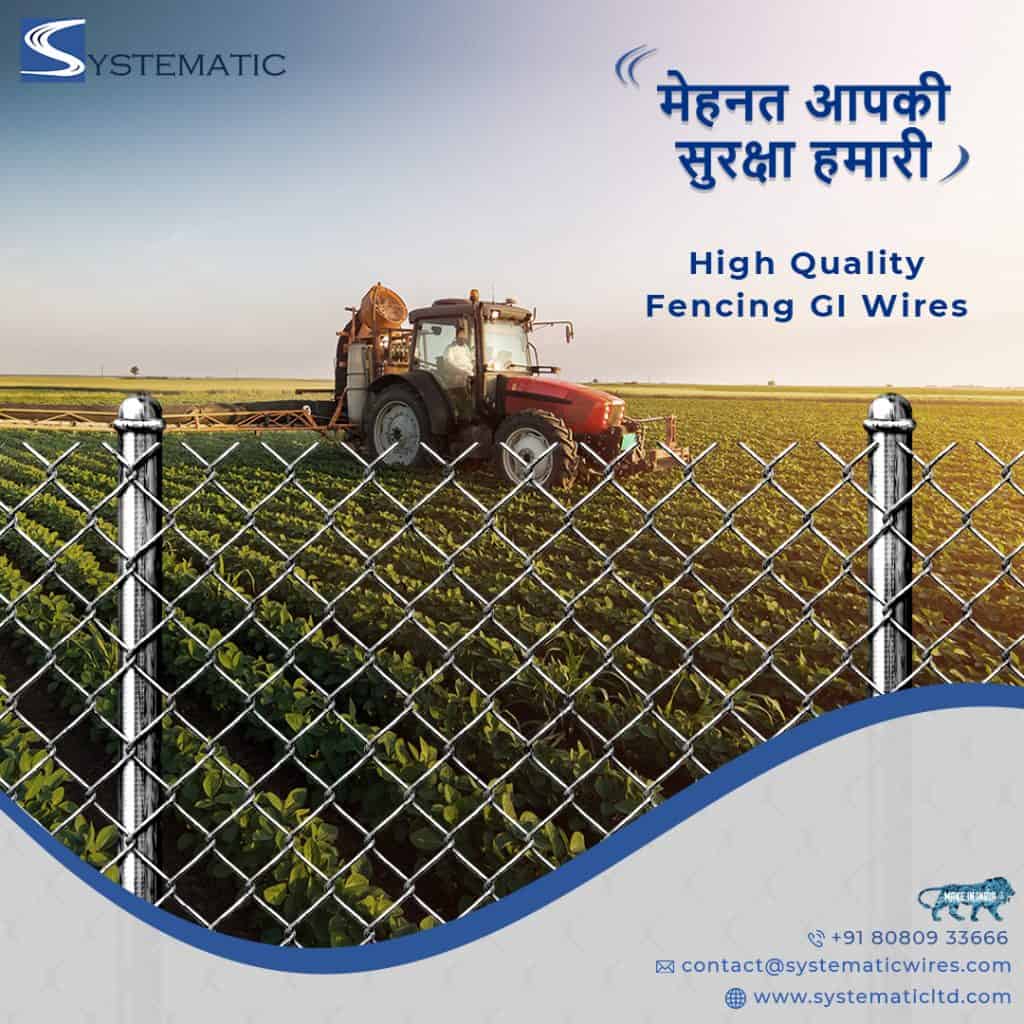
With so many companies vying to make their products available online, it can be not easy to know where to turn. So if you’re in the market for a chain-link fence, consider Systematic Group Industries. We provide chain-link fencing that is both affordable and extremely high quality. Systematic Group Industries has everything you need for your chain link fence.
What is a galvanized chain-link fence?
A galvanized chain link fence is composed of steel wire mesh that has been dipped in molten zinc and hot-dipped to give it superior corrosion resistance. The result is a product that can be used indoors and out, giving homeowners the flexibility to choose where it’s installed.
If you’re looking for a superior option, galvanized materials are the way to go. They aren’t as heavy as other fencing products, but they’re incredibly strong and will stand up to tough weather.
Which side of a chain-link fence faces out?
It can depend on how wide the gap in the chain fences are. For a smaller gap, you’ll need to use a shorter link on the outside of the fence.
For a larger gap, you’ll want to use a long link that will extend past both sides of the fence and provide additional stability.
Since your goal is to cover as much area as possible when fencing off your yard, make sure you use the longest link possible to achieve this.
The important thing is that your chain link fence looks neat and attractive, so check with your supplier for more detailed information on how they recommend installing chain-link fencing material.
Which side of a chain-link fence is supposed to be at the top?
A chain-link fence is supposed to have the top of the chain link at eye level. This is because a chain link fence allows people to see over it and prevents children who may be short from easily climbing. However, if you put the bottom of the chain-link at eye level, you’ll need taller posts because all of the tension will place downward pressure on this part of the fence.
How is a chain-link fence installed?
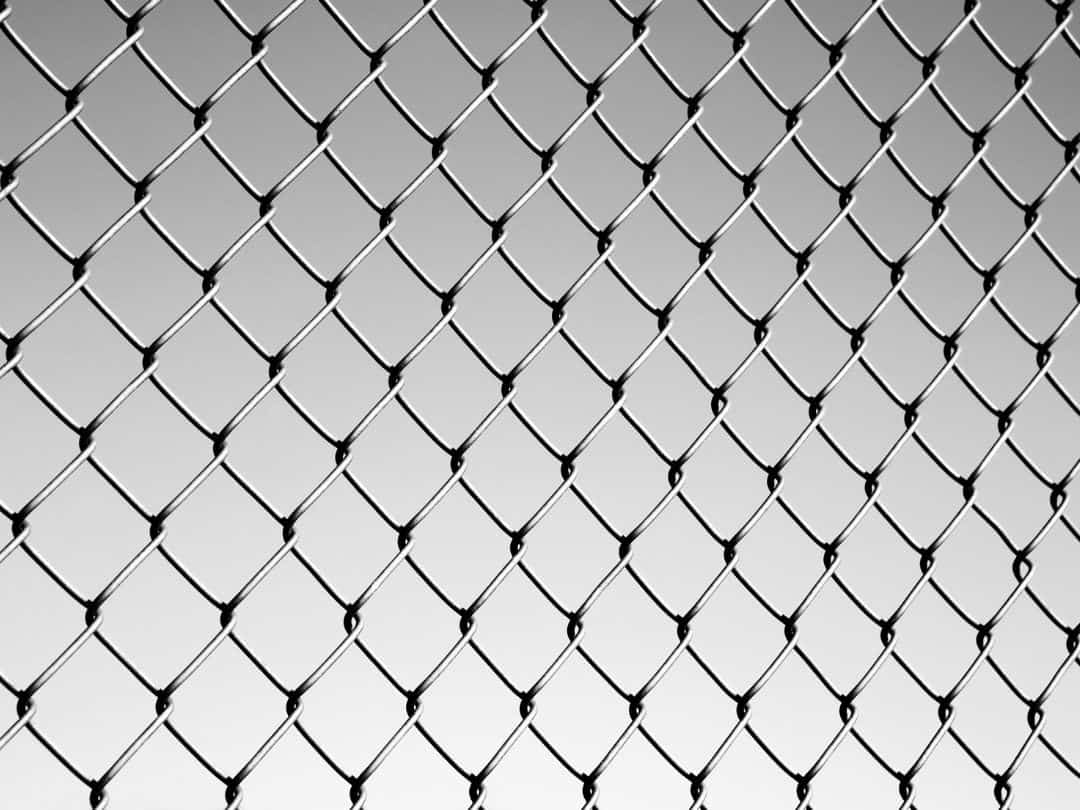
Before you decide to install a chain-link fence, it is important to know that they can stretch up to two inches over time. Therefore, it can make them slightly larger than originally installed. If you don’t allow for this in your measurements, you may end up with a fence that doesn’t fit the area properly.
To successfully install a chain-link fence, you will need to know how to dig post holes, mix concrete, use tensioning clips, and secure the top pieces of the fence. It can be difficult to install on your own because of the tension placed on the posts, clips, and individual chains. That being said, if you are very handy or have one or two additional people available to help with installation, you might be able to accomplish this task.
- The first thing you need to do is find a flat area where you’d like the fence installed. If this is not possible, at least place some boards or sawhorses down to create a surface that will support the tension that the fence will place.
- Once you have your work area ready, you can begin digging post holes using a post hole digger, tamping the dirt firmly into them.
- You can then secure the posts in place with concrete.
- You will want to stretch out your fence wire along the ground until each piece is attached to its corresponding post. It would help if you used special tensioning clips designed for this purpose because they grip onto the wire more tightly than any other product available on the market.
- Each chain piece should be attached to its corresponding post as tightly as possible and then wrapped with the mesh, which will hold it all in place. When this is complete, you can begin adding top pieces and tightening them down to create a secure barrier that will keep your home safe from intruders.
How hard would it be to climb a chain-link fence?
A chain-link fence is difficult to climb because it is tightly interwoven with metal wires with small gaps between each strand. Chain link fence makes it difficult for even the most adventurous climbers to scale. It would be much easier to slip through or under a chain-link fence rather than attempt to scale its entire height.
How do I choose the right chain link fence for my property?

Choosing a chain-link fence is not easy because there are so many different fencing materials from which to choose. You can find fences with posts or fencing, woven wire or knitted mesh styles, and types that will fit in beautifully with your home’s exterior design.
- The best type for you depends largely on what kind of project you are undertaking and the look you want to achieve.
- It would be best to consider how you would use your fence to choose the right material. For example, suppose you are looking for a fence to mark boundaries or keep livestock. In that case, the knitted mesh may be ideal because it is more affordable than woven wire. On the other hand, woven wire fencing may be better for creating an imposing barrier between properties.
- Some people choose chain link fences because of the strength and durability, making it difficult for thieves or even large animals to tear through their property. These are ideal for use around backyards, sports fields, garden areas, and more.
- It’s also important to remember that chain links can be used both indoors and out, giving you the ability to use them as an interior fencing choice as well.
- If you have young children, it may be best to opt for a fence with horizontal wires spaced far apart from one another instead of the more traditional vertical ones.
How do you run a tension wire on a chain-link fence?
Running a tension wire on a chain-link fence is an important step to take after you have installed the rest of your fence. Using special clips, you can secure this wire to posts at each corner of the perimeter and then pull the wire taut along its length so that it lays flat against the ground.
The tension wire will help keep your fence in place and prevent it from shifting or sagging over time.
Important things to Remember
- The tension wire on a chain-link fence is usually the first run, so you will want to lay it at the bottom.
- If your fencing materials are not pre-wired, you’ll need to attach the wire to the tensioner.
- You will then need to place it under the lowest row of the mesh using either staples or tacks.
- You may need to run the wire through the posts themselves, so you may need to remove a mesh section to thread it through.
- It would help if you never allowed your tension wire to become slack, as this could cause damage and wear and tear on your fencing materials. You can use a fence tensioner tool for this, which is easy and inexpensive to buy or rent from a local home improvement store.
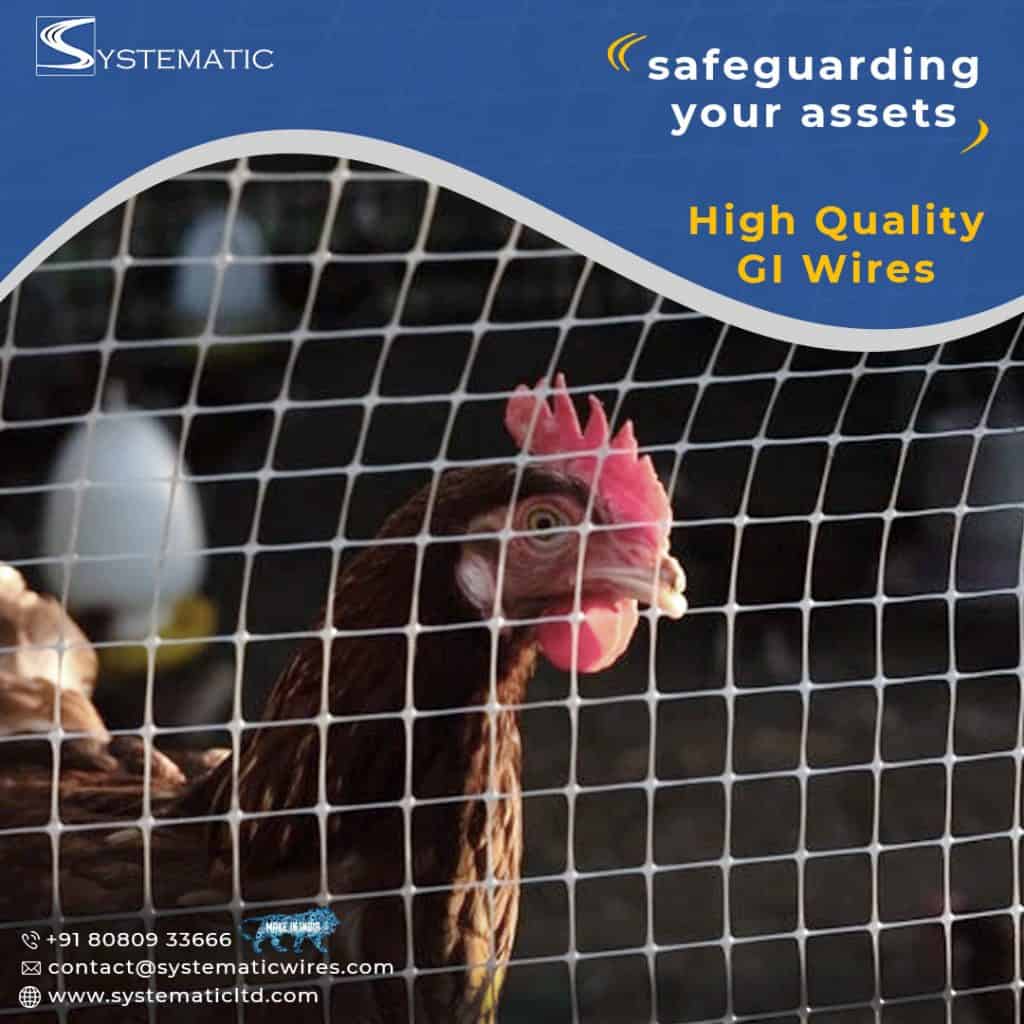
We hope this blog post has helped you understand the basics of chain link fence wire. We’ve answered the most popular FAQs about our products and services to help make your purchase decision easier. If you still have questions after reading through this blog post, please contact us directly at +91-8080933666. Our customer service team is standing by 24/7 to answer any other queries that may come up before or after placing an order with us!